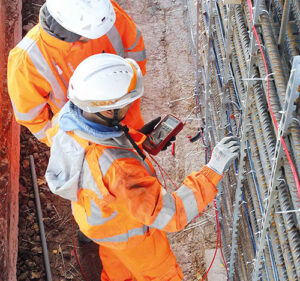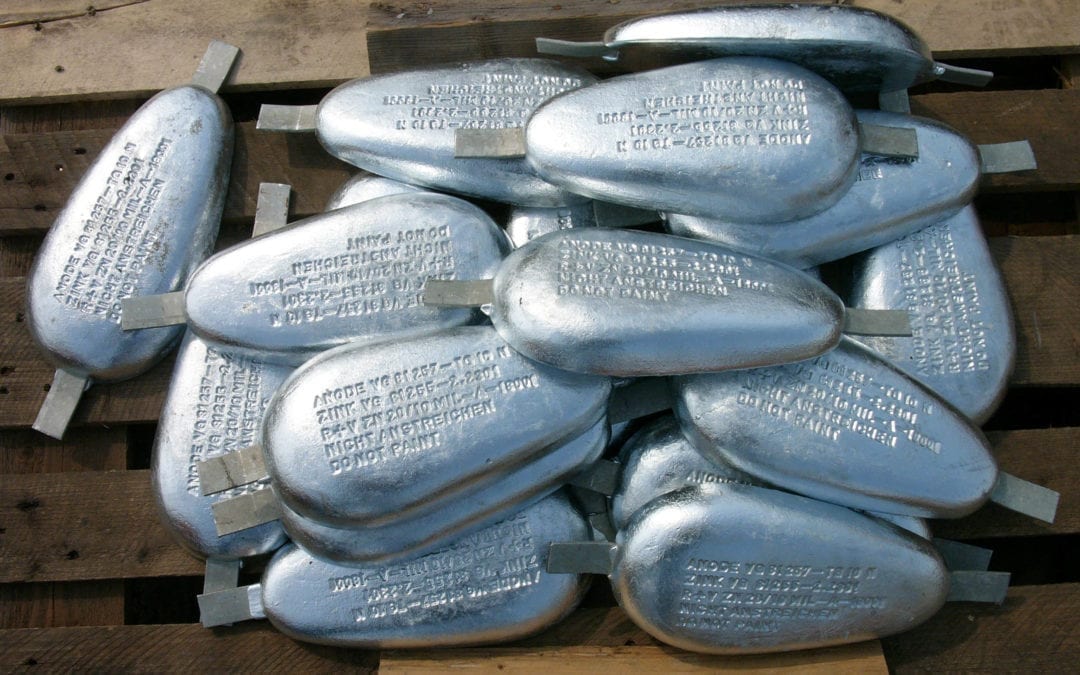The cart is empty!
Key Knowledge to Ensure Longevity of CP Systems
In the first two articles in this mini-series, we explored the basics of corrosive reaction and using cathodic protection to counteract the corrosive reaction. In this third and final instalment we cover the design, monitoring, and maintenance of CP systems and their interaction with protective coatings. Understanding these aspects is essential to ensure the long-term effectiveness and reliability of CP in preventing corrosion.
Design of Cathodic Protection Systems
Designing an effective CP system requires a detailed assessment by a cathodic protection engineer.
The engineer must determine the need for corrosion protection, decide on the appropriate CP system, and calculate the current requirement and optimal locations for anodes. The goal is to ensure that the CP current is uniformly distributed to protect all intended surfaces and to achieve the most economical and reliable solution.
In complex structures, mathematical modelling may be employed to optimise anode locations, spacings, and sizes.
Monitoring and Maintenance of CP Systems
Regular monitoring, and maintenance are crucial to the performance of CP systems. All anodes, whether galvanic or impressed current, degrade over time and need to be replaced periodically. CP systems can be designed to last up to 50 years, but this requires routine inspections and potential adjustments to ensure continued effectiveness.
Monitoring involves measuring the steel/electrolyte potential using fixed monitoring locations or portable survey equipment. This data helps the CP engineer determine if the current delivery and distribution are adequate, optimal, or need adjustment. Ensuring proper CP performance involves maintaining the balance between current density and distribution to prevent corrosion effectively.
Interaction of CP with Protective Coatings
CP is often used in conjunction with protective coatings to provide enhanced corrosion protection:
- The coatings act as a barrier, reducing the overall current demand of the CP system and improving current distribution by isolating the metal from the corrosive environment.
- CP then protects the steel at damaged areas of the coating where the underlying metal is exposed.
Not all coating systems are suitable for use with CP:
- Coatings must be compatible with CP operation and withstand cathodic reactions, which can generate alkaline conditions.
- Coatings used with CP should undergo ‘cathodic disbondment’ testing to ensure they are not damaged by these reactions.
- Additionally, excellent adhesion to the metal surface is crucial to prevent disbonded coatings from shielding the steel from CP current, which could allow corrosion to occur under the coating.
CP and Concrete Structures
CP is widely applied to protect steel reinforcement inside concrete, particularly when normal passive conditions for steel in alkaline concrete fail or are at risk of failing due to chloride contamination from seawater or de-icing salts.
In North America, Europe, and other regions, extensive impressed current CP systems are applied to reinforced concrete structures, either from new construction or as part of repairs.
Impressed current systems for concrete use mixed metal oxide/titanium anodes in mesh, tube, or ribbon form, either cast into new concrete or fixed onto or into existing structures. For buried and immersed reinforced concrete, anodes may be positioned somewhat remote from the structures. Conductive carbon-filled organic coatings and metal sprays of zinc and aluminium alloys have also been used as impressed current anodes.
Galvanic anodes have been used in reinforced concrete, though their performance in dry environments is debated. These can include small cast anodes in concrete repairs or drilled holes, and zinc or aluminium alloy thermal sprayed coatings. In tidal applications, immersed galvanic anodes are used on piles and columns.
In Summary
Cathodic protection is a a powerful tool in reducing corrosion damage – especially when combined with suitable protective coatings. The key points to remember are:
- Properly designed and maintained CP can prevent corrosion damage to uncoated structures and on coated structures where the coating becomes damaged
- CP does not prevent corrosion on internal surfaces when applied to external surfaces, and is ineffective above mid-tide level in marine environments
- Combining CP with compatible coatings provides economical and long-term protection for buried or immersed structures.
By working together, coatings technologists and CP specialists can deliver optimal, long-term, and affordable corrosion protection solutions for their clients.
In conjunction with industry experts, we have developed a comprehensive set of training and certification programs for all in the corrosion industry. These include our leading Cathodic Protection, Training, Assessment and Certification Scheme and Coating and Inspection Training. For details of these courses, please contact ICorr today.


